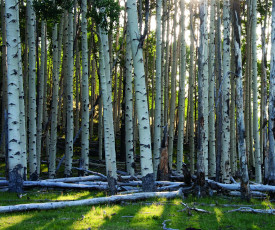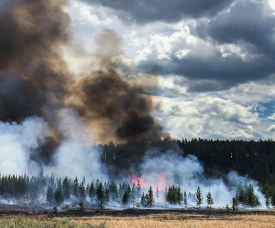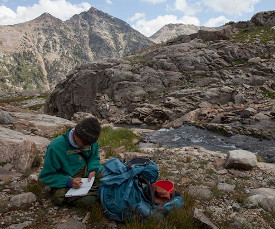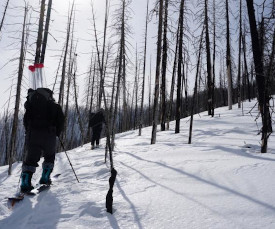December 23, 2019
Can trees & forests acclimate to a changing climate?

By studying a tree’s physiology, scientists are trying to determine how forests adapt to rising levels of atmospheric carbon dioxide and higher temperatures. By quantifying these effects, scientists hope to ascertain a forest’s ability to acclimate.
View Forests face climate change tug of war for more information.
Photo: Martin Venturas, University of Utah
More frequent Yellowstone fires test forest resiliency

While 100-to-300-year fire intervals in Yellowstone National Park historically have given trees the chance to mature and build up their seed banks, recent fires in areas burned just 16-28 years ago are proving devastating to young trees.
With a warming climate and increased frequency of drought, Yellowstone forests are likely to burn in shorter intervals.
For details, check out Resilience of Yellowstone’s forests tested by unprecedented fire.
Source of alpine streams offer clues about climate impacts

Changes to alpine streams fed by glaciers and snowfields can alter the types of bacteria and other microbes in those streams, while streams fed by underground ice insulated by rock offer hope that the impact of climate change will be less severe in some areas.
For more information, view Warming climate threatens microbes in alpine streams, new research shows.
Photo: Scott Hotaling
Earlier mountain snowmelt tied to forest fires

More than 11 percent of all forests in the West are currently experiencing earlier snowmelt and snow disappearance as a result of fires. Snow melted an average five days earlier after a fire than before all across the West. The timing is important for forests, fish and reservoir operations.
Check out Forest fires accelerating snowmelt across western US, study finds for more information.
Photo: Christina Aragon, Portland State University